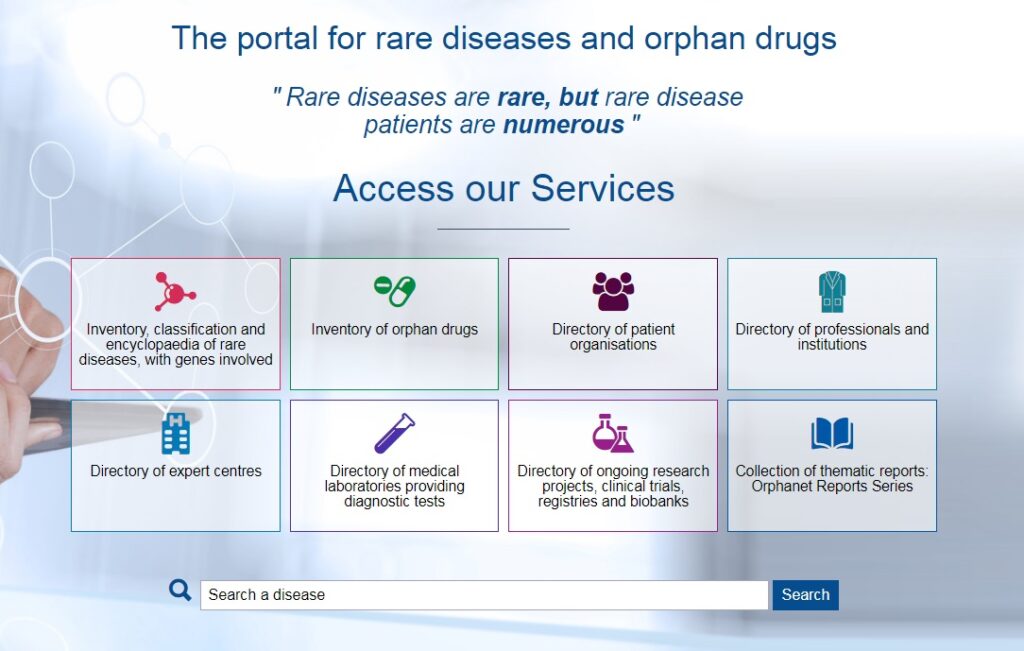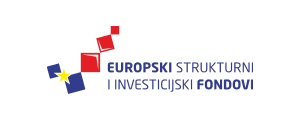About Rare Diseases
1. General Overview
Rare diseases are, by definition, those diseases that affect fewer than 5 individuals per 10,000 people. Although they are rare, when considering the large number of rare diseases (between 6,000 and 7,000 different diagnoses), it becomes clear that approximately 6-8% of the entire population in Europe suffers from rare diseases. For some of the more common diagnoses, there are patient organizations, but many diagnoses do not have their own organizations due to the very small number of affected individuals. Within the rare disease group, there are also diseases that are considered "very rare," affecting one person in 100,000 or even fewer. These patients are especially isolated and vulnerable. However, since most people with rare diseases face similar challenges, associations have been formed for all rare diseases, gathering both associations for specific diagnoses and individual members.
From a medical standpoint, these are often chronic, degenerative, and fatal diseases, significantly reducing the quality of life for those affected, especially since they are dependent on external assistance. It is common for such diseases to be diagnosed late, precisely because of their rarity.
From a social standpoint, the general public and even professional circles have very limited knowledge of rare diseases, which is why psychosocial care is poorly organized. Given the wide spectrum of symptoms, many of which are very severe, patients rarely have the opportunity to participate in the social life of their communities, which is not adapted to their needs. As a result, patients face numerous social and psychological problems that further reduce the quality of life for both the patients and their families.
For a large number of rare diseases, effective treatments have not yet been found, and for those diseases for which treatments do exist, they are often so expensive that patients cannot afford them. One of the activities of the Alliance is to assist patients and their families in Croatia by helping ensure that specific medications for certain rare diseases are included in the list of expensive medicines under the Croatian Health Insurance Fund.
2. Diversity as a Problem
From a medical standpoint, rare diseases are characterized by a great diversity of symptoms, which vary not only from one disease to another but also within the same disease. The same disease can present a very different clinical picture for different patients, and many different symptoms can occur in a single patient.
Rare diseases also vary in terms of severity, but for the majority of rare diseases, the expected lifespan is significantly shorter than that of healthy individuals. The impact of the disease on life expectancy differs from one disease to another. Some diseases cause death at birth, many are fatal and degenerative, while others allow for a normal life if diagnosed early and appropriately treated.
The first symptoms of rare diseases affect patients at different ages. For many, symptoms appear from birth and in childhood, but there are also those that are specific to adulthood. A third possibility is that the first symptoms appear in childhood, but the disease worsens only in later life. Furthermore, symptoms that resemble those of common and well-known diseases may obscure the fact that it is actually a rare disease. The combination of different symptoms can also contribute to a misdiagnosis.
3. Most Common Causes of Illness
80% of rare diseases have a known genetic origin. They can be inherited or develop from new genetic mutations or chromosomal abnormalities. These diseases affect about 3-4% of newborns. Other rare diseases are caused by infections (bacterial or viral), allergies, or chemical and radiation exposure. Some rare diseases are caused by a combination of genetic and environmental factors. However, for most rare diseases, the etiological mechanisms are unknown due to a lack of scientific research.
4. Common Characteristics of Rare Diseases
Despite the great diversity, rare diseases share some common characteristics:
- Rare diseases are severe, chronic, often degenerative, and fatal.
- In 50% of rare diseases, the first symptoms appear in childhood.
- The quality of life of individuals affected by rare diseases is often reduced due to a lack of independence or loss of autonomy.
- Rare diseases are a heavy burden for the entire family due to the significant difficulties in finding adequate therapy for the affected individuals.
- Rare disease patients must be provided with help and support to ensure they can lead the highest quality of daily life possible.
5. Orphan Drugs
These are medical products intended for the diagnosis, prevention, and treatment of rare diseases. They are called "orphan drugs" because, under normal market conditions, it is not profitable for the pharmaceutical industry to develop and sell drugs designed to treat a small number of individuals affected by rare diseases.
Drugs developed for this non-profitable market are not financially viable for pharmaceutical companies, as the cost of bringing such a drug to market cannot be recouped through its sales. For this reason, governments and non-profit organizations advocating for the rights of patients with rare diseases emphasize the need for economic initiatives to encourage pharmaceutical companies to develop and sell "orphan drugs."
6. Life of Affected Individuals and Their Families
Despite the diversity attributed to rare diseases, individuals with rare diseases and their families face the same challenges that stem from the rarity of their condition. These challenges include:
- Inability to make an accurate diagnosis – the period between the onset of the first symptoms and the correct diagnosis involves unacceptable and highly risky delays, as well as incorrect diagnoses that lead to improper treatments.
- Lack of information – about the disease itself and the possibilities of receiving appropriate help, including access to competent specialists.
- Lack of scientific knowledge – which leads to difficulties in developing therapeutic aids, defining therapeutic strategies, and the lack of appropriate medications.
- Social consequences – living with a rare disease brings difficulties in all areas of the affected individual's life, whether at school, work, or during leisure time. Affected individuals are often subjected to stigmatization, isolation, and exclusion from the social community.
- Lack of appropriate and quality healthcare – healthcare for individuals with rare diseases requires the work of a multidisciplinary team, including the application of physiotherapy, nutrition, and psychotherapy. Patients may live for many years in insecure and dangerous conditions without the necessary medical care (e.g., rehabilitation) and be excluded from the healthcare system, even after a diagnosis has been made.
- High costs of some known medications and therapies – additional living costs related to rare diseases, such as the use of human services and technological aids, and the lack of social care or reimbursement for expenses, cause suffering for the entire family and dramatically increase the inability of patients to access the necessary healthcare.
- Shortcomings in the availability of therapy and care – innovative therapies are often unevenly available in European countries due to delays in pricing decisions and cost reimbursement decisions, as well as the inexperience of physicians administering treatments. In most cases, there is no consensus on therapeutic recommendations.
The first difficulty faced by patients and their families is the accurate diagnosis. This struggle repeats itself with every new stage of disease progression. The lack of knowledge about the pathology of rare diseases often puts the lives of patients at risk and causes great harm – unnecessary delays, frequent medical consultations, and prescriptions for inappropriate or even harmful medications and treatments. Because little is known about most rare diseases, the correct diagnosis is often made too late, after the patient has been on some kind of treatment for months or even years that is intended for another, more common disease. Often, only some of the present symptoms are recognized and treated.
Some of the consequences of misdiagnosis:
- Birth of other children with the same disease
- Inappropriate behavior and insufficient support from family members
- Receiving inadequate, sometimes even harmful, therapy, which can lead to the patient's death
- Deterioration of the patient's condition in terms of intellectual, psychological, and physical health, which can ultimately lead to the patient's death
- Loss of trust in the healthcare system
Because the correct diagnosis has not been made, emergency services cannot provide adequate care for the patient. For example, a headache is treated as a migraine, but in reality, it is caused by a brain tumor. Without a diagnosis in childhood, family members start to feel guilty because their child behaves "strangely" and does not develop mentally and psychomotorically in the usual way.
The entire family of an individual suffering from a rare disease, whether a child or an adult, is affected by the disease of their loved one and becomes marginalized, making them psychologically, socially, culturally, and economically vulnerable. Misunderstanding, depression, isolation, and anxiety are inevitable parts of the lives of individuals suffering from rare diseases and their families. One example of such situations is that any appearance of abnormal eating habits, which occur in many rare diseases (and lead to weight loss/obesity of the patient), is often blamed on the mother, causing her guilt and insecurity. In many cases, the birth of a child with a rare disease leads to the divorce of parents.
Assisting individuals with rare diseases and their families includes providing psychological support. Every parent has great fears and hopes for their child, but when a rare disease diagnosis is made, those fears and hopes take on enormous proportions. The future becomes filled with uncertainty, which will largely depend on the level of knowledge that exists in society about the specific disease. Knowledge of the disease will lead to early diagnosis and provision of quality and correct healthcare. The perception of the quality of life of the affected individual will not depend on the severity of their disease, but on the quality of services and healthcare they receive.
Individuals with rare diseases are an endangered minority in relation to the healthcare system in Croatia – often without the correct diagnosis, therapy, or scientific research, and without hope. Due to this situation, it is crucial to adopt a specific public policy on rare diseases at the national level. Additionally, it is necessary to encourage scientific research to increase the existing knowledge, which is currently far from meeting the needs of individuals with rare diseases.
Additional Information
Orphanet is a reference portal for rare diseases, providing detailed information about specific diagnoses—including clinics, laboratories, research projects, registries, clinical trials, patient organizations, and a comprehensive list of orphan drugs at all stages of development.

There are more than 6,200 rare diagnoses listed on Orphanet, and the number continues to grow as medicine advances and new rare diseases are discovered.
Croatian Alliance for Rare Diseases uses Orphanet database as a reference when registering new members. Currently, our internal database includes 400 primary diagnoses, some of which have numerous subtypes.

